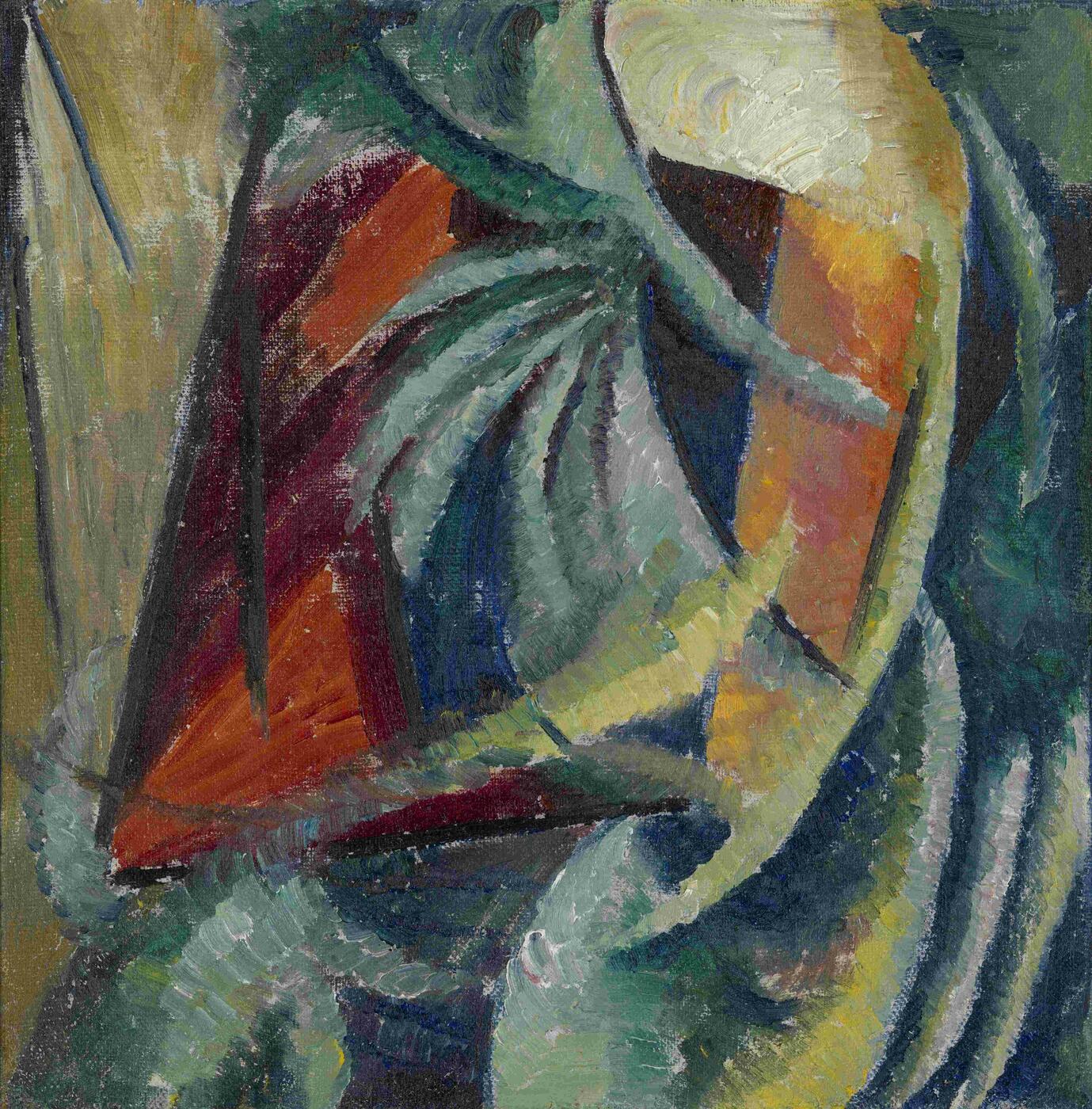MacDougall's Russian Art Auctions 1-2 Dec 2010
1 December 2010

* 317. BOGOMAZOV, ALEKSANDR 1880-1930
Abstract Composition
Oil on canvas, laid on cardboard, 35 by 34 cm.
300,000-500,000 GBP
Exhibited: A. Bogomazov, Musee d'Art Moderne, Refectoire des Jacobins, Toulouse, 21 June- 28 August 1991. A. Bogomazov, The State Russian Museum, Palace Editions, St Petersburg, 2008.
Literature: Exhibition catalogue, A. Bogomazov, Musee d'Art Moderne, Refectoire des Jacobins, Toulouse,1991, p. 47, illustrated.
Exhibition catalogue, A. Bogomazov, The State Russian Museum, Palace Editions, St Petersburg, 2008, p. 38, illustrated.
Dating from 1913–1914, Abstract Composition is a rare work from what is undoubtedly the most important period in Bogomazov’s oeuvre. By then, the artist had gone through to all the styles typical of the time, from Realism to Symbolism. In 1913–1914 however, under the influence of Italian Futurism, Bogomazov’s style changed completely, and the artist painted his very best works.
Having absorbed the lessons of Italian Futurism, his paintings of that time are full of movement and energy. Abstract Composition is a typical example of the artist’s Futurist period. Building on his theoretical work, such as the treatise Painting and its Elements (1914), Bogomazov introduced the spiral into this dynamic composition, which he saw as a symbol for the ever-changing cosmos.
Bogomazov had learned about the Italian Futurists through A
lexandra Exter, whom he had met while studying at the Kiev Art School. Exter, who visited Paris on a regular basis, had a huge influence on the Ukrainian and Russian avant-garde, promulgating the latest tendencies in European art. In 1914, the two artists organized in Kiev the exhibition Kol’tso (The Ring), where Bogomazov showed 88 works. Nikolai Kulbin, the famous theoretician and patron of Russian Futurism, wrote on this occasion, "The latest discovery at the Kol’tzo exhibition is above all the work of Bogomazov. He is without any doubt an accomplished, real painter, who has embraced the values of the French school, but works independently."
The main representative of the Ukrainian avant-garde, Bogomazov must also be seen as one of the best representative of Russian Futurism, together with such eminent artists as Natalia Goncharova and Mikhail Larionov. Despite its importance in understanding the development of the artistic avant-garde in Russia and Ukraine, Bogomazov’s legacy is to a certain extent uncoordinated, and his works are rarely encountered outside the context of museums and exhibitions.
The present work was included in the artist’s first posthumous exhibition in the West, which took place in Toulouse in 1991, as well as in the first ever exhibition of the artist’s work in Russia, which was organized by the State Russian Museum in 2008.
Notes on symbols:
* Indicates 5% Import Duty Charge applies.
Ω Indicates 20% Import Duty Charge applies.
§ Indicates Artist's Resale Right applies.
† Indicates Standard VAT scheme applies, and the rate of 20% VAT will be charged on both hammer price and premium.